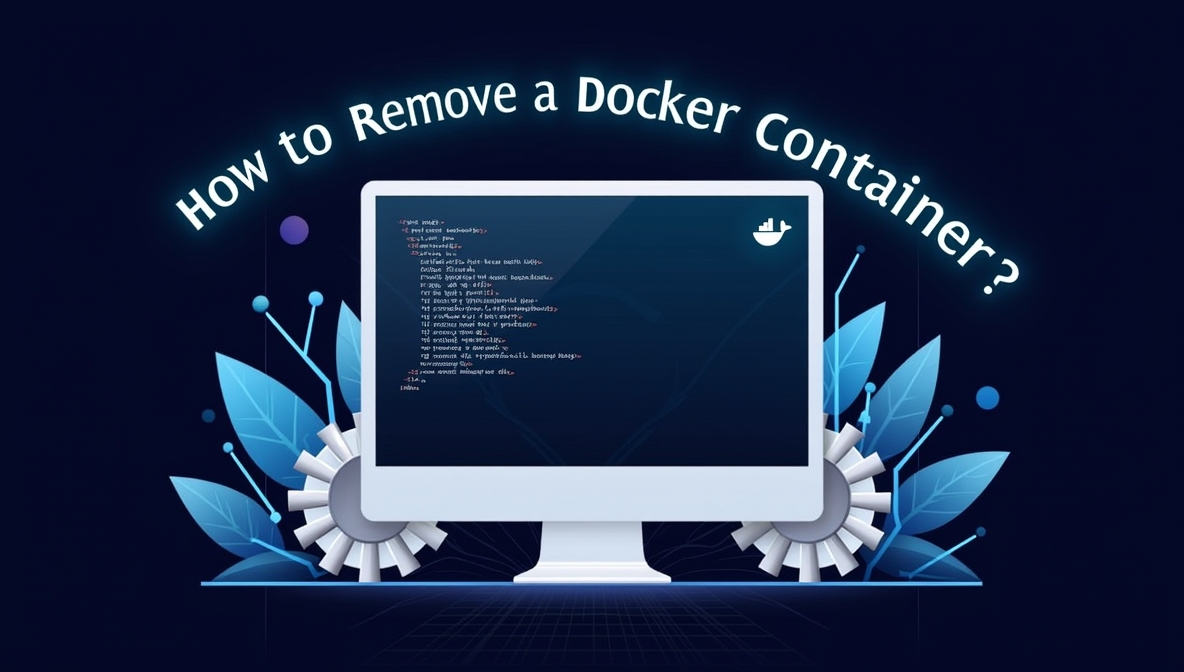How to Remove a Docker Container: A Complete Guide for Developers | OpsNexa
Docker containers are one of the most powerful tools in modern application development.
They let us build, test, and deploy with incredible speed and flexibility.
But just like any great tool, they need proper management.
If you don’t clean up your unused containers, they can pile up — eating up resources, slowing down your system, and creating confusion.
At OpsNexa, we believe a clean, efficient system is the foundation of next-level development.
Today, we’ll walk you through exactly how to remove Docker containers — safely, quickly, and confidently.
Let’s jump right in!
Why Remove Docker Containers?
Before we start deleting things, let’s first understand why it’s important to remove Docker containers regularly:
✅ Free Up Disk Space
Stopped containers still take up space. Deleting them keeps your environment lean.
✅ Improve Performance
Too many dangling containers can slow down system performance.
✅ Better Organization
Clear out unused containers to keep your workspace neat and focused.
✅ Prevent Mistakes
Old containers hanging around can accidentally be restarted or modified.
At OpsNexa, we treat container management as an essential DevOps habit — not an optional task.
Quick Primer: What is a Docker Container?
In case you’re new to Docker:
-
A container is a lightweight, standalone, executable package that includes everything needed to run an application — code, runtime, system tools, libraries, and settings.
-
Containers are created from images.
🛠️ In short: Images are blueprints. Containers are running instances of those blueprints.
How to View Existing Docker Containers
Before removing anything, it’s good practice to list your containers.
1. List Running Containers
This shows containers that are currently active.
Example output:
2. List All Containers (Including Stopped Ones)
This will show running + exited containers.
Example:
🔵 Note:
You can only remove containers that are stopped.
How to Remove a Docker Container (Step-by-Step)
1. Remove a Single Container
Use the docker rm command.
Example:
or
If successful, Docker will confirm removal by showing the container ID or name.
2. Remove Multiple Containers at Once
You can delete multiple containers in a single command:
Example:
Simple and fast!
3. Force Remove a Running Container
If a container is still running, trying to delete it normally will throw an error:
✅ Solution: Use the -f (force) flag.
Example:
This forces the container to stop and deletes it immediately.
⚠️ Caution:
Be careful when using -f on production systems. It could terminate critical processes!
4. Remove All Stopped Containers
To clean up all stopped containers in one go:
Docker will prompt you for confirmation:
Type y and press Enter.
✅ This is super useful after long development cycles!
5. Remove Containers Based on Filters
You can delete containers based on specific filters (advanced trick):
Example: Remove containers exited more than 24 hours ago:
🎯 Super helpful for automating cleanup in CI/CD environments.
Common Errors When Removing Docker Containers (And How to Fix Them)
| Error | Cause | Solution |
|---|---|---|
| Cannot remove a running container | The container is still active | Stop or force remove it |
| No such container | Typo in ID/name | Double-check with docker ps -a |
| Permission denied | Insufficient privileges | Use sudo on Linux |
| Conflict error | Container still tied to volumes/networks | Remove volumes with docker rm -v |
Best Practices for Managing Docker Containers | OpsNexa Tips
🔹 Use Meaningful Names
Give your containers descriptive names for easier tracking.
🔹 Automate Cleanups
Incorporate docker container prune into your scheduled scripts.
🔹 Be Careful with -f Force Deletes
Only use it when absolutely necessary — especially in production.
🔹 Monitor Disk Usage
Keep an eye on storage usage with:
🔹 Clean Up Volumes Too
Volumes can also accumulate and consume space. Use:
Quick Guide: Stopping a Docker Container Before Removing
Sometimes you’ll need to manually stop a container first.
1. Stop the Container
Example:
2. Then Remove It
This two-step method avoids force deleting and keeps your system safer.
How to Completely Reset Docker (Images, Containers, Volumes)
If you want to nuke everything:
This removes:
-
All stopped containers
-
All unused images
-
All unused networks
-
All build cache
🚨 Again, be very careful with this in real environments!
Final Thoughts: Stay Clean, Stay Fast 🚀
Managing containers isn’t just a maintenance task — it’s a development best practice.
By learning how to remove Docker containers properly, you’ll:
-
Speed up your builds
-
Reduce system clutter
-
Maintain higher system security
-
Save valuable disk space
At OpsNexa, we empower developers to build smarter, cleaner, and faster — not just ship and forget.
✅ Start making container cleanup a part of your regular workflow.
✅ Keep your Docker environment as efficient as your code!



